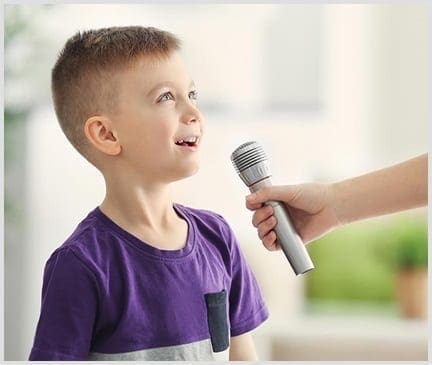You might have had the experience of being unable to come up with the right word.
You’re in the middle of a speech or a conversation or sharing a story, when suddenly the word you are searching for gets stuck “on the tip of your tongue” or suddenly escapes you.
You also might have been in the middle of a conversation are realized you aren’t really paying attention and don’t know what the other person is talking about.
You feel a little lost because you allowed yourself to get distracted.
This happens to all of us occasionally, when our mind is moving along in conversation and suddenly loses the thread.
But for a child who has a language processing disorder, this can be their constant reality and find themselves continually stuck, unable to express themselves and unable to follow the conversation.
Over time, you can imagine how frustrating and challenging this communication disorder can be and how discouraged children who have language processing disorder may feel.
The difficulty of expressive and receptive language disorders is that they affect a child’s ability to comprehend what others are saying verbally and to be able to convert their own thoughts into words and sentences.
The more you can learn about the characteristics of language processing disorders the more you can help and assist these children develop relationships and share their thoughts and feelings.
In this article, we will talk about what a language disorder is and the characteristics of a language processing disorder in children.
We will talk about the variety of language processing disorders, including the symptoms, diagnosis, and treatment that characterize the communication disorder.
We hope that this article will help you be more understanding and sensitive to the needs of those with language processing disorder and help them find a solution to decrease their frustration and isolation.
WHAT IS A LANGUAGE DISORDER?
Let’s start our discussion by understand what characterizes a language disorder.
Language disorders are a challenge or impairment that impacts how someone is able to communicate through verbal language.
However, it’s important to know that Language Processing Disorder (LPD) relates only to the processing of language.
LPD can affect expressive language (what you say) and/or receptive language (how you understand what others say). We will talk about both of these in more detail later in this article.

These impairments vary in degree and intensity and affect each child differently. For example, one person may have difficulty understanding and following conversations or verbal instructions, while someone else may simply find it difficult to get their thoughts out clearly and translate their feelings into words.
It is estimated that up to 5% of children in the U.S. have some type of language disorder, and today more than a million children receive help and special education specifically for language-related disorders.
Language disorders can be hard to diagnose; children with language disorders may simply be thought of as “shy,” “quiet,” or “distracted.” However, language and communication play such a huge role in our lives, that if the language disorder is not detected, these children can suffer throughout childhood, adolescence, and adulthood.
For instance, people with language disorders find social settings challenging and they may withdraw and isolate themselves.
Another possible consequence of misdiagnosis is an increase in negative behaviors that arise out of frustration or anger at a child’s own inability to communicate effectively and say how they feel. These children may act out or be aggressive simply because they are so frustrated and discouraged.



